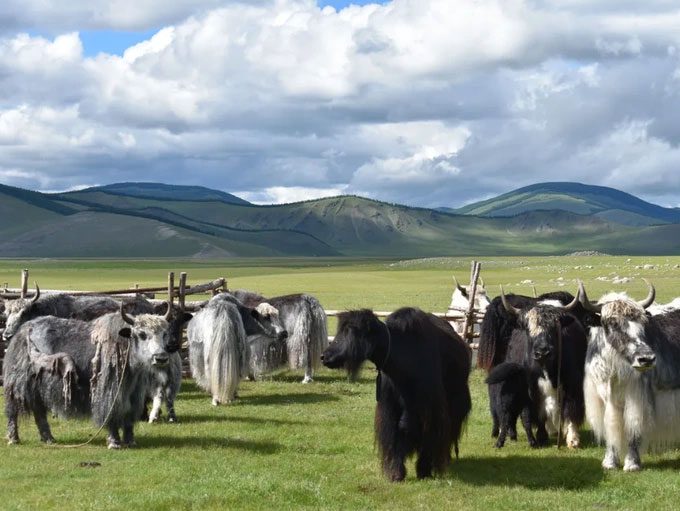The phenomenon of global warming is causing the permafrost in the eastern Eurasian region to melt, revealing eerie graves and mummies within.
A study published in the journal Communications Biology has presented new findings from the time of the Mongol Empire, which was unified in 1206 AD.

The new discoveries shed light on the lives of the elite during the Mongol Empire as they intensified their conquests across Eurasia. (Photo: Shutterstock).
During this period, Genghis Khan, the notorious leader and founder of the Mongol Empire, launched a series of bloody military campaigns across Asia to lay the foundation for the largest empire in human history, stretching from the Pacific coast of Asia to Eastern Europe.
To date, much of the remnants of this empire have been buried under layers of permafrost. They have only recently emerged as global warming has melted the ice above.
In 2018 and 2019, scientists discovered 11 intact skeletons in an ancient burial site. Remarkably, they were in surprisingly good condition, despite being over 800 years old.
Surrounding the remains, archaeologists also found numerous jewelry items, luxury materials, and other artifacts. This indicates that those buried there likely held high status in society.

A well-preserved 2,500-year-old mummy found in a burial site in Mongolia. (Photo: Spiegel).
In a recent study, scientists delved into the analysis of the remains to gain a deeper understanding of the lifestyle and diets of the nobles of the Mongol Empire.
By examining the proteins found in the dental calculus of the remains, they discovered evidence that these individuals consumed milk from horses, sheep, goats, and Tibetan cattle (also known as yaks).
The evidence of Tibetan cattle particularly intrigued scientists, as this animal plays a vital role in the culture of people in the eastern Eurasian mountainous regions.
Previous documents indicated that Tibetan cattle provide a high-calorie food source, thick fur for warm textiles, and fat for producing essential items like candles.

Tibetan cattle continue to play a significant role in Mongolian culture today. (Photo: Getty).
Through this new research, scientists hope to uncover new insights into the ancient religions and daily lives of the elite of the Mongol Empire.
“This study helps us confirm that ancient Mongols utilized this iconic animal, as well as its relationship with the rulers,” said Alicia Ventresca-Miller, an anthropology professor at the University of Michigan.
However, Julia Clark, an archaeologist, warns that if the permafrost continues to deteriorate, it is likely that many remains and ancient artifacts will be destroyed before they can be properly studied and assessed by science.
Additionally, looting of ancient tombs remains a problem that shows no signs of being controlled.
“The melting ice makes it easier for scientists to find historical evidence, but at the same time, it makes the sites more vulnerable to looting,” Julia Clark stated.





















































